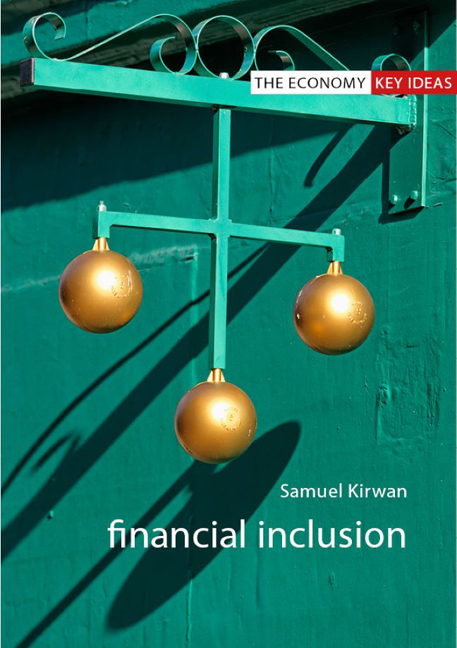Book contents
- Frontmatter
- Contents
- 1 Introduction
- 2 What is financial inclusion?
- 3 Financial inclusion as a tool of poverty eradication: the case of microcredit
- 4 Financial inclusion as the production of new markets: the case of reverse redlining
- 5 Financial inclusion as financial subjectivity: the case of financial capability in the UK
- 6 Financial inclusion as political project: the case of conditional cash transfers
- 7 Financial inclusion as transformations in financial practice: the case of mobile money
- 8 Conclusion
- References
- Index
3 - Financial inclusion as a tool of poverty eradication: the case of microcredit
Published online by Cambridge University Press: 21 December 2023
- Frontmatter
- Contents
- 1 Introduction
- 2 What is financial inclusion?
- 3 Financial inclusion as a tool of poverty eradication: the case of microcredit
- 4 Financial inclusion as the production of new markets: the case of reverse redlining
- 5 Financial inclusion as financial subjectivity: the case of financial capability in the UK
- 6 Financial inclusion as political project: the case of conditional cash transfers
- 7 Financial inclusion as transformations in financial practice: the case of mobile money
- 8 Conclusion
- References
- Index
Summary
This document's writers advocate that “access to finance” rather than “poverty eradication” should drive the strategies governments adopt to build inclusive financial sectors. Evidence suggests this approach results in more prudent financial sector policies and decisions, while simultaneously and decisively aligning financial sectors to achieve the [Millennium Development Goals]. Nevertheless, broad and deep financial sectors that promote access to finance, in particular microfinance, are the bedrock of poverty eradication. Microfinance directly provides low-income people the tools to protect, diversify and increase their sources of income.
(UNCDF 2005)This bold statement, presented in the context the 2005 Year of Microcredit, was included in a United Nations Capital Development Fund (UNCDF) document emphasizing the role to be played by financial services in eradi-cating extreme poverty and hunger (the first of the Millennium Development Goals). The statement indicates a belief in a complete transformation in how international development could be conceived and approached. Gone would be the paternalistic focus upon eradicating poverty through charities, NGOs and other well-meaning actors telling people what they needed. The financial sector could be considered an ally in achieving the Millennium Development Goals, so long as it was approached on its own terms. As displayed in the second half of the quote, the foundation of this optimism was the apparent success of the microfinance movement.
I begin the stories explored in this book with the area of financial inclusion that has both the highest profile and has been subject to the most consistent criticism. Among these criticisms, as I discuss further in Chapter 8, is the charge that financial inclusion is itself, in large part, a term used to continue the microcredit project while masking its inherent problems. The chapter studies the microcredit and microfinance industry in India, routinely referred to as the leading microfinance market in the world (Navin & Sinha 2019), and in Bangladesh, initially the most widely discussed microfinance market, largely due to the role of the Grameen Bank and its founder, Muhammad Yunus.
While I explore further below the difference between the terms microcredit and microfinance, in simplest terms, microcredit denotes the narrow lending of small sums to poor borrowers, while microfinance describes the broader field, including insurance, savings and other services.
- Type
- Chapter
- Information
- Financial Inclusion , pp. 21 - 38Publisher: Agenda PublishingPrint publication year: 2021



